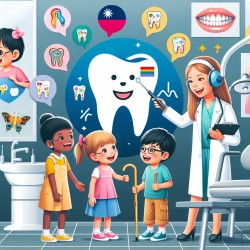Introduction
Bullying, a pervasive issue in schools, has evolved with the digital age, manifesting both in-school and online. The study "Factors Predicting In-School and Electronic Bullying among High School Students in the United States: An Analysis of the 2021 Youth Risk Behavior Surveillance System" sheds light on the predictors of bullying, offering valuable insights for educators and practitioners.
Key Findings from the Study
The study utilized data from the 2021 Youth Risk Behavior Surveillance System, analyzing responses from 17,232 high school students. It identified several predictors of bullying:
- Sociodemographic Characteristics: Age, gender, and race significantly influence bullying victimization. Older students are less likely to be bullied, while females are more prone to both in-school and electronic bullying.
- Obesity: Obese students face higher odds of being bullied both in school (AOR = 1.32, p = 0.003) and electronically (AOR = 1.30, p = 0.004).
- Marijuana Use: Students using marijuana have increased odds of being bullied in school (AOR = 2.15, p < 0.001) and electronically (AOR = 1.81, p < 0.001).
- Screen Time: Spending extended hours on digital devices is linked to higher risks of electronic bullying (AOR = 1.25, p = 0.014).
Implications for Educators and Practitioners
Understanding these predictors allows educators and practitioners to tailor interventions effectively. Here are some actionable strategies:
- Personalized Support: Develop interventions that consider students' age, gender, and race, focusing on those at higher risk.
- Promote Body Positivity: Implement programs that encourage acceptance and reduce stigma associated with obesity.
- Digital Literacy Programs: Educate students on safe online practices and the risks associated with excessive screen time.
- Substance Use Awareness: Address marijuana use in anti-bullying programs, highlighting its correlation with bullying victimization.
Encouraging Further Research
The study's findings highlight the need for continued research into bullying's predictors and impacts. Practitioners are encouraged to explore:
- The role of emerging technologies in bullying dynamics.
- The long-term effects of bullying on mental health and academic performance.
- Effective interventions that address the intersectionality of various risk factors.
By staying informed and proactive, educators and practitioners can create safer, more inclusive environments for all students.
To read the original research paper, please follow this link: Factors Predicting In-School and Electronic Bullying among High School Students in the United States: An Analysis of the 2021 Youth Risk Behavior Surveillance System.










